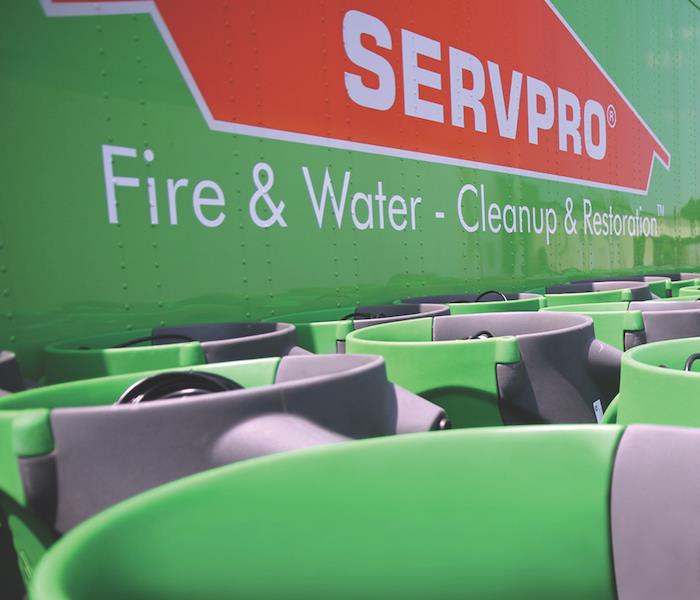Where Is Reconstruction Needed After Water Disasters in Miami Homes?
9/8/2020 (Permalink)
 Water leaks can quickly cause damage in your home. Call SERVPRO today to avoid additional water loss of your property.
Water leaks can quickly cause damage in your home. Call SERVPRO today to avoid additional water loss of your property.
The repairs and rebuilding necessary after water emergencies can be vital in making losses “Like it never even happened.”
Water disasters vary considerably from one South Miami home to the next, making elements like emergency services and mitigation vital for saving customers time and money. Among these emergency services is controlled demolition, which seeks to remove only severely damaged and unsalvageable construction materials from the drying zones. This removal and discarding of components often occur before job scoping and other mitigation tasks.
The term water damage repair for South Miami homes can describe many of the actions and approaches that our technicians, contractors, and trusted third-party vendors must accomplish. Because so many areas of the property can become compromised and damaged after a finite timeline, many of these restoration projects require some degree of controlled demolition and build back. Some of the most sensitive materials and elements include:
- Roofing
- Drywall
- Insulation
- Framing
- Carpet
- Wood Flooring
- Light Fixtures
What Can Controlled Demolition Do Before Mitigation?
After the exposure of construction materials to standing water, pooling, and high moisture content, they can experience oversaturation that compromises their composition. Instead of widespread demolition and tear out of all materials exposed or near the water damage, a calculated approach can prevent higher costs and longer restoration times. The advantages of removing portions of damaged construction materials include:
- Remove Saturated Materials – The removal of oversaturated structural components reduces the possibilities of microbial growth and continued damage of nearby porous matter.
- Access Damaged Utilities – When plumbing or drains become a source of water damage in the house, demolition can directly access these breaks.
- Provide More Efficient Drying – With openings leading to the whole of the structural cavities, machines like centrifugal air movers can be more effective in evaporation.
- Prevent Collapse – Removing damaged materials prevents them from falling or giving out on their own where they could injure occupants of the house or technicians.
When Does Utility Repair Occur?
With the bulk of the wall system exposed, we can gain immediate access to any damaged utilities that might exist. Because plumbing can often be one of the primary origin points for considerable water damage, repairing these pipe breaches should be a priority. Once the drywall has gotten removed and discarded, and wet insulation has been vacuumed out of the wall system, our building trade professionals can locate the plumbing damage and replace/repair it. The exterior elements cannot be reinstalled after mitigation until water service has been restored to the house by fixing any vulnerabilities in the service lines.
How Likely is Mold After Water Losses?
Prolonged water exposure can often be a threatening situation for materials and contents in your home. Microbial growth can result when moist conditions persist, and suitable organic materials like drywall, flooring, ceiling components, insulation, and more are nearby to become hosts for colonization.
The likelihood of mold is even higher when DIY restoration has taken place, as these drying and extraction efforts are often only superficial. When water migrates beyond the surface to impact structural cavities and underlying layers of flooring, dampness can facilitate mold growth in places inaccessible and out of sight to the occupants of the house. For as widespread as these damages can become before they breach the surface layer, remediation efforts often consist of controlled demolition and reinstallation.
Some facts about mold growth include:
- Mold can develop after only 48 hours of moist conditions
- High humidity can cause microbial growth
- Inadequate drying of water emergencies can facilitate fungal growth
- Mold deteriorates organic matter like drywall and wood
Are Third-Party Contractors and Vendors Required for Rebuilding?
A combination of our competent restoration professionals, in-house contractors, and third-party companies can work towards the most efficient reconstruction and repair. While we can manage controlled demolition and most build-back for a property on our own, we also rely on specialty contractors and experts to conduct things like environmental testing for properties once remediation and reconstruction complete. This independent testing of the structure can ensure that you received the most thorough remediation and water restoration available, including the reinstallation of discarded materials.
Water damages can often leave your house in need of repairs and build-back. Despite our commitment to restoring over the replacement of exposed materials and items in the home, controlled demolition and reinstallation of these elements is often unavoidable with widespread, prolonged exposures. No matter how we can help after water disasters, we have professionals capable of providing a comprehensive solution. Give our SERVPRO of South Miami team a call anytime at (305) 269-8900.



 24/7 Emergency Service
24/7 Emergency Service